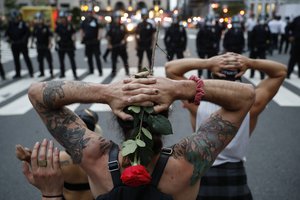Tula
Tula may refer to:
Geography
Antarctica
Iran
Italy
Kenya
Mexico
Mongolia
Russia
United States
People

Tula, Russia
Tula (Russian: Тула; IPA: [ˈtulə]) is an industrial city and the administrative center of Tula Oblast, Russia, located 193 kilometers (120 mi) south of Moscow, on the Upa River. Population: 501,169 (2010 Census); 481,216 (2002 Census); 539,980 (1989 Census).
Etymology
The name of the city is of pre-Russian, probably Baltic, origin.
History
Tula was first mentioned in the Nikon Chronicle in relation to a military operation conducted in 1146. As the chronicle was written in the 16th century, the date is disputed. The first confirmed mention of Tula dates to 1382.
In the Middle Ages, Tula was a minor fortress at the border of the Principality of Ryazan. As soon as it passed to the Grand Duchy of Moscow, a brick citadel, or kremlin, was constructed in 1514–1521. It was a key fortress of the Great Abatis Belt and successfully resisted a siege by the Tatars in 1552. In 1607, Ivan Bolotnikov and his supporters seized the citadel and withstood a four-months siege by the Tsar's army. In the 18th century, some parts of the kremlin walls were demolished. Despite its archaic appearance, the five-domed Assumption Cathedral in the kremlin was built as late as 1764.

Tula (Curaçao)
Tula (died 3 October 1795) was a Curaçaoan slave who liberated himself and led the Curaçao Slave Revolt of 1795 that convulsed the island for more than a month. He is revered on Curaçao today as a fighter for human rights and independence. He was executed on 3 October 1795.
The film Tula: The Revolt (2013) is based on Tula's life story.
See also
References
External links
Belle
Belle may refer to:
People
Places
Businesses

Belle (Disney)
Belle is a fictional character who appears in Walt Disney Pictures' 30th animated feature film Beauty and the Beast (1991), as well as its sequels and spin-offs. The character was originally voiced by actress and singer Paige O'Hara until Disney eventually replaced her with voice actress Julie Nathanson in 2011 due to the former's maturing voice. The book-loving daughter of an eccentric inventor, Belle is regarded as an outcast by her peers because of the character's nonconformity, and longs to abandon her provincial village life in exchange for adventure. When her father is imprisoned by the Beast, Belle sacrifices her own freedom in return for his, and eventually learns to love the Beast despite his outward appearance.
Disney chairman Jeffrey Katzenberg commissioned Beauty and the Beast as an animated musical with a strong heroine, and hired first-time screenwriter Linda Woolverton to write it. Loosely based on the heroine in Jeanne-Marie Leprince de Beaumont's fairy tale "Beauty and the Beast", Belle was developed by Woolverton into a stronger and braver character for the film. Directly inspired by the women's rights movement, Woolverton wanted Belle to be as different as possible from The Little Mermaid's popular Ariel, deliberately conceiving the character as a feminist in response to the negative reception Disney had been receiving for the studio's depiction of women. Belle's fearlessness and love of reading were inspired by actress Katharine Hepburn's portrayal of Jo March in the film Little Women (1933), while the writers developed the character by giving her aspirations beyond simply marriage and romance. Animated by James Baxter and Mark Henn, the former of whom based the character's graceful mannerisms on artist Edgar Degas' paintings of ballerinas, Belle's European facial features were inspired by British actresses Vivien Leigh and Audrey Hepburn.

Snoopy's siblings
In Charles M. Schulz's comic strip Peanuts, Snoopy was often stated to have seven siblings. Five appeared at various times in the strip: four brothers, Andy, Marbles, Olaf, and Spike; and one sister, Belle. The two others were never mentioned by name in the comic strip. According to the 1991 TV special Snoopy's Reunion, their names are Molly and Rover; however, their appearance is not considered canonical in the comic strip. In the June 6, 1959 comic strip, following the birth of Charlie Brown's sister Sally, Snoopy remarks that he has no brothers or sisters, and is an "only dog." However, in a March 18, 1971 strip, Snoopy writes in his autobiography: "I was born one bright Spring morning at the Daisy Hill Puppy Farm. I was one of eight puppies."
Their mother is called Missy, but has appeared only once in Peanuts, on July 26, 1996. A t-shirt that was sold for several years at Target and other stores shows Spike, Andy, Snoopy, Marbles and Olaf in a parody of the famous dogs playing poker print, despite much advertising copy which misidentified the characters.
Belle, Tula Filmography
-
1920, role: actress , character name: Little Girl with two mothers
-
1919, role: actress , character name: Young Nadja
-
1919, role: actress , character name: Margaret Blake as a child
-
1919, role: actress
-
1918, role: actress , character name: Alice
-
1918, role: actress , character name: Helmar Child
-
1918, role: actress , character name: Mytyl
-
1917, role: actress , character name: The Child
-
1917, role: actress
-
1917, role: actress , character name: Rose's Sister
-
1917, role: actress , character name: Dick Primrose
-
1916, role: actress , character name: Child
-
1916, role: actress , character name: The child, age 5
-
1916, role: actress , character name: Rana
-
1915, role: actress
-
1915, role: actress , character name: Daughter
-
1915, role: actress , character name: Child
-
1915, role: actress , character name: Child
Never Get To Heaven
Baby, am I what you're contemplating
Are you gonna tell me or keep me waiting
I gotta know what you're intending to do cause
CHORUS
You'll Never Get To Heaven walkin' out on me
I know that thing's ain't what they used to be
You'll Never Get To Heaven walking out on me
Oh no, I'll never ever ever let you go
I used to run my hands through your pockets
You used to feel my changes but now you've stopped it
I'm counting on you, I think you should understand that
CHORUS
You'll Never Get To Heaven walkin' out on me
I know that thing's ain't what they used to be
You'll Never Get To Heaven walking out on me
Oh no, I'll never ever ever let you go
BRIDGE
Down on your knees - the Devil's in his glory
Zero degrees - too cold to not be sorry
I'm begging you for heaven's sake
It's criminal to make the same mistake
Tula
Tula may refer to:
Geography
Antarctica
Iran
Italy
Kenya
Mexico
Mongolia
Russia
United States
People
Latest News for: tula belle
Lee Treadway, age 81, of Temple, died Thursday.
 TDT News
28 May 2020
TDT News
28 May 2020
Aspen Princess: Are two really better than one? We’ll find out after puglimage
Bell’s Greek Pizza to begin free slice Mondays
 Mount Pleasant Morning Sun
29 Jan 2019
Mount Pleasant Morning Sun
29 Jan 2019
Free pizza Wednesday at Blaze Pizza in Mt. Pleasant
 Mount Pleasant Morning Sun
13 Nov 2018
Mount Pleasant Morning Sun
13 Nov 2018
Bell's Greek Pizza to host grand opening Oct. 17
 Mount Pleasant Morning Sun
11 Oct 2018
Mount Pleasant Morning Sun
11 Oct 2018
Hallsville Happenings
 Marshall News Messenger
18 Jan 2018
Marshall News Messenger
18 Jan 2018
- 1





































